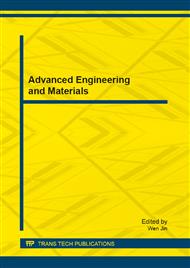p.66
p.72
p.76
p.82
p.86
p.92
p.97
p.104
p.109
Effect of Sintering Conditions on the Bloating Property of Artificial Aggregates Made from Dredged Soil
Abstract:
The artificial aggregates were fabricated by two sintering methods to recycle the dredged soil produced at thermal power plant in Korea. The first one is the direct sintering method in which the green body is to put into the furnace of preheated at the desired temperature, and the other is the temperature-rising sintering method in which the green body is to put into the furnace of 800~900 oC, heated with a heating rate of 15 °C/min to the final sintering temperature. The aggregate manufactured by the direct sintering method showed the highest bloating behavior than that of the temperature-rising method. To provide the holding time in the input step was to decrease the bloating behavior in the temperature-rising sintering method. The water absorption for the all aggregates was decreased with sintering temperature, and the values of aggregates made by direct sintering was higher than that of the temperature-rising sintering method. The aggregate made of dredged soil by using various sintering methods had the specific gravity of 0.9~1.8 and water absorption of 3~14 %, and so could be applicable for many fields such as civil, environmental, and agricultural engineering fields.
Info:
Periodical:
Pages:
86-91
Citation:
Online since:
February 2013
Authors:
Price:
Сopyright:
© 2013 Trans Tech Publications Ltd. All Rights Reserved
Share:
Citation:


